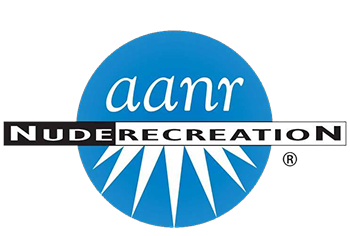
Timothy Sargent
“Stuck in the past” is not a qualifier that any movement or organization hopes to acquire, but it’s one that seems to have been attached to nudist clubs and even organizations such as AANR. It’s true that the world has changed significantly from the one in which the first American nudist clubs and organizations sprang forth, but I would argue that it has largely changed in favor of the nudist movement—if we are bold enough to see it. We find ourselves now in a society that embraces all bodies, that celebrates all backgrounds and life experiences, and that strives for equality and inclusivity. All of that seems to fall right in line with the lofty ideals of the very first nudists to gather on American soil. Maybe this ever-changing, increasingly diverse world that we so often see as an obstacle to our mission is just the opportunity we’ve been waiting for.
How do we tap into this cultural moment of authenticity and inclusivity? How do we ensure the movement we have built feels like a welcoming space for the increasingly diverse world around us? Recent studies into this area make the path forward clear: We must embrace diversity in our marketing and content, elevate diverse voices and perspectives within our community, and embrace a culture of inclusivity within the organization’s leadership structure.
According to data from the Brookings Institute (Frey, 2020), the U.S. is diversifying at a faster rate than expected, citing census data showing that Latino, Asian American, and Black populations grew by rates of 20%, 29%, and 8.5% respectively. The growth in these groups made up nearly all of the population growth in the U.S. between 2010 and 2019. If we compare the demographic makeup of the U.S. in 1930—around the time when the organization that would grow to become AANR entered the arena—with the demographic makeup in 2019, we see that the percentage of the population identifying as white has dropped from 89.8% to 60.1%. The decline is even more pronounced in the under-16 crowd, where less than 50% is white. This is the population that the nudist movement in the United States must represent if we hope for our legacy to carry forth to the next generation.
This is where marketing and advertising come in. In order to appeal to a more diverse crowd, people from those groups need to see themselves represented in the content that we share. Studies have shown that ad campaigns featuring diverse representation greatly increase total engagement, especially from those groups represented (Wiese, 2020). The reverse is also true: An Adobe study found that 62% of respondents claimed that a brand’s representation of diversity impacted their perception of the brand’s product, citing that 58% of LGBTQ respondents, 53% of Black respondents, and 40% of Hispanic respondents abandoned a brand based on a lack of representation of their group in the brand’s marketing (Walker, 2021).
These are numbers that no modern organization can afford to overlook, especially not one as intimately linked to equality, body acceptance, and the shedding of social barriers as AANR. But how do we show that we are a welcoming place for the diverse world around us if our base is disproportionately homogeneous? According to a recent Forbes article, the key to a successful diversity and inclusion campaign is including members of those groups in the discussion and allowing those diverse perspectives to guide our initiatives (Thompson, 2020). This is not a novel idea, but part of the larger push towards more diverse, inclusive, and equitable leadership teams that has been taking place for decades.
A recent study by Boston Consulting Group shows that increased diversity of all types in the rooms where decisions are made leads to increased innovation, increased flexibility, and, as a result, increased profitability (Lorenzo et al., 2021). The key to this success, however, is not in simply having people of diverse backgrounds present, as this can often lead to those individuals becoming tokenized rather than included. The benefits of diversity are only experienced when inclusion and belonging are core cultural values of an organization, when diverse perspectives are embraced, valued, and incorporated into the decision-making process (Ely & Thomas, 2020).
All of this data points to one conclusion: AANR has a duty to represent the diversity of the nudist community by including people from diverse backgrounds in the content that we release, promoting the diverse voices within our community, and incorporating diverse perspectives in decision-making committees and positions of leadership. That may seem daunting, but I believe that this is a unique opportunity for AANR to take the lead in representing the increasingly diverse make-up of the nudist community. We are incredibly fortunate that the nudist community is already made up of passionate and motivated individuals from all sorts of diverse backgrounds, experiences, and walks of life, many of whom are yearning for an opportunity to contribute to the larger cause of promoting social nudism. All we need to do is tap into the power of our diverse community and celebrate the perspectives and insights that they have to offer. All we need to do is be bold.
Timothy Sargent
References in APA Format
Ely, R. J., & Thomas, D. A. (2020, October 20). Getting Serious About Diversity: Enough Already with the Business Case. Harvard Business Review. https://hbr.org/2020/11/getting-serious-about-diversity-enough-already-with-the-business-case.
Frey, W. H. (2020, July 16). The Nation Is Diversifying Even Faster Than Predicted, According to New Census Data. Brookings. https://www.brookings.edu/research/new-census-data-shows-the-nation-is-diversifying-even-faster-than-predicted/.
Lorenzo, R., Voigt, N., Tsusaka, M., Krentz, M., & Abouzahr, K. (2021, March 4). How Diverse Leadership Teams Boost Innovation. Boston Consulting Group. https://www.bcg.com/en-us/publications/2018/how-diverse-leadership-teams-boost-innovation.
Thompson, S. (2020, February 5). Data Shows Consumers Want Diversity In Marketing-Why Many Brands Struggle To Get It Right And How To Fix. Forbes. https://www.forbes.com/sites/soniathompson/2020/02/05/data-shows-consumers-want-diversity-in-marketing-why-many-brands-struggle-to-get-it-right-and-how-to-fix.
Walker, T. (2021, January 27). Why Diversity in Ads Is More Important Than Ever For Revenue. AspireIQ. https://www.aspireiq.com/blog/why-diversity-in-ads-is-more-important-than-ever-for-revenue-2020/.
Wiese, J. (2020, September 15). How Diversity and Inclusion Campaigns Drive Brand Outcomes. Association of National Advertisers. https://www.ana.net/blogs/show/id/mm-blog-2020-09-vab-diversity-drives-brand-outcomes.
References in Order of Appearance (Title + Link Only)
- The Nation Is Diversifying Even Faster Than Predicted, According to New Census Data https://www.brookings.edu/research/new-census-data-shows-the-nation-is-diversifying-even-faster-than-predicted/
- How Diversity and Inclusion Campaigns Drive Brand Outcomes https://www.ana.net/blogs/show/id/mm-blog-2020-09-vab-diversity-drives-brand-outcomes
- Why Diversity in Ads Is More Important Than Ever For Revenue https://www.aspireiq.com/blog/why-diversity-in-ads-is-more-important-than-ever-for-revenue-2020/
- Data Shows Consumers Want Diversity In Marketing-Why Many Brands Struggle To Get It Right And How To Fix https://www.forbes.com/sites/soniathompson/2020/02/05/data-shows-consumers-want-diversity-in-marketing-why-many-brands-struggle-to-get-it-right-and-how-to-fix
- How Diverse Leadership Teams Boost Innovation https://www.bcg.com/en-us/publications/2018/how-diverse-leadership-teams-boost-innovation
- Getting Serious About Diversity: Enough Already with the Business Case https://hbr.org/2020/11/getting-serious-about-diversity-enough-already-with-the-business-case

